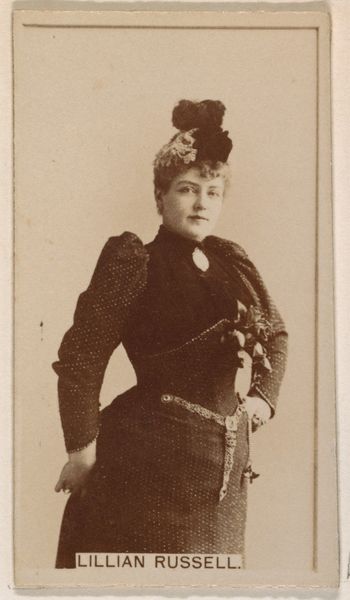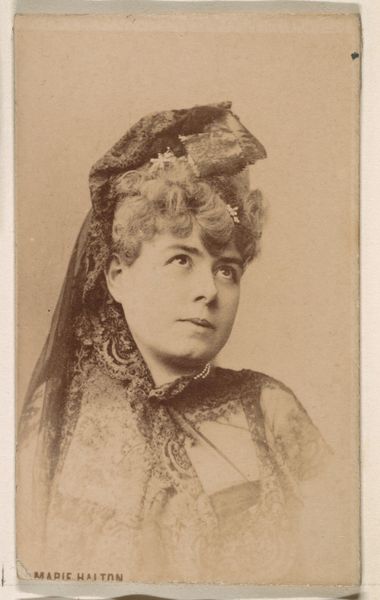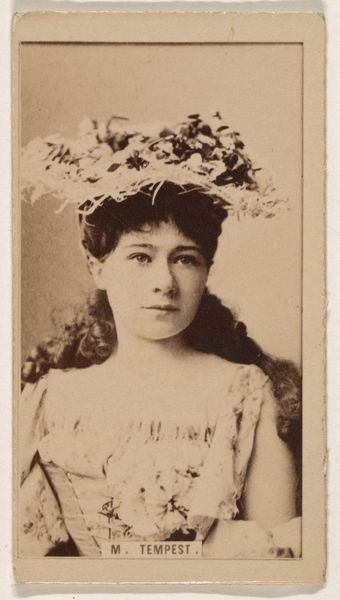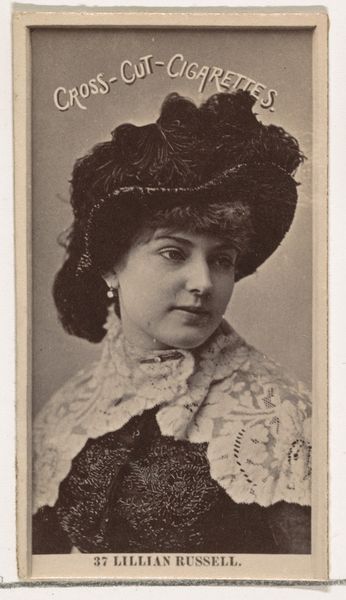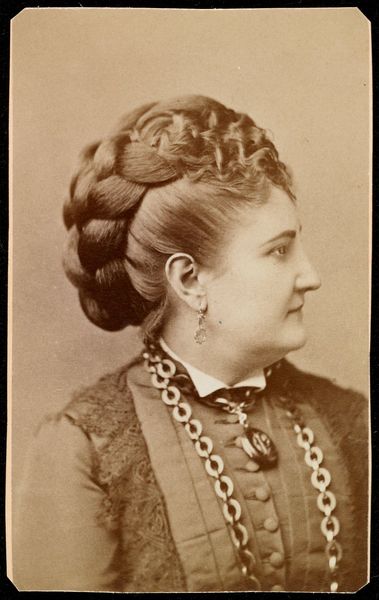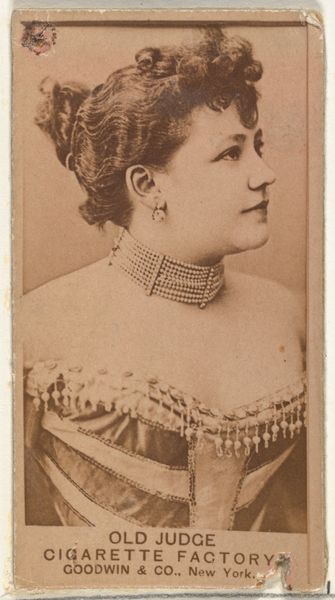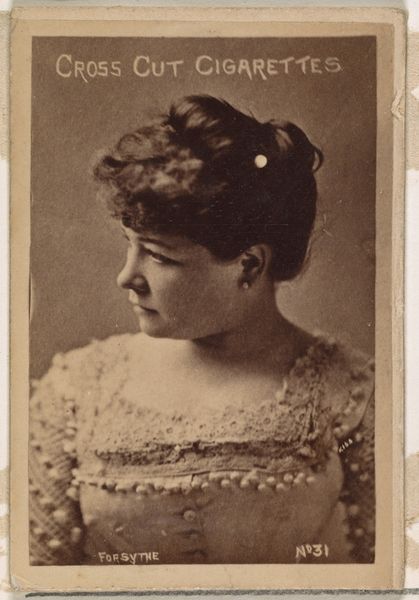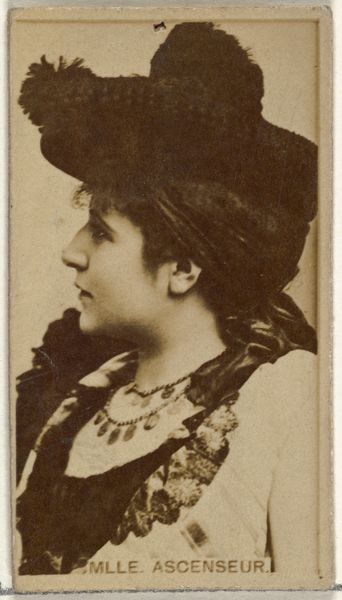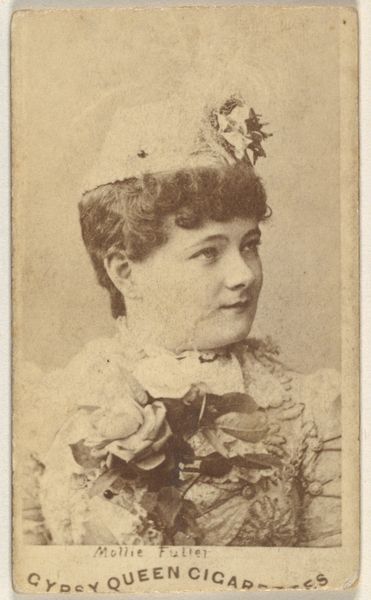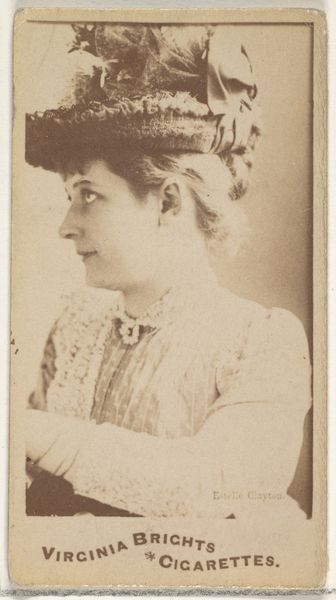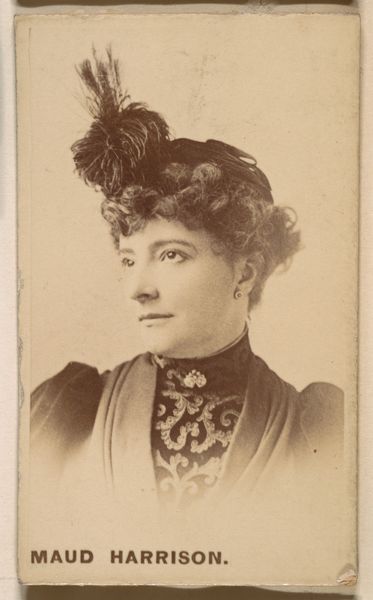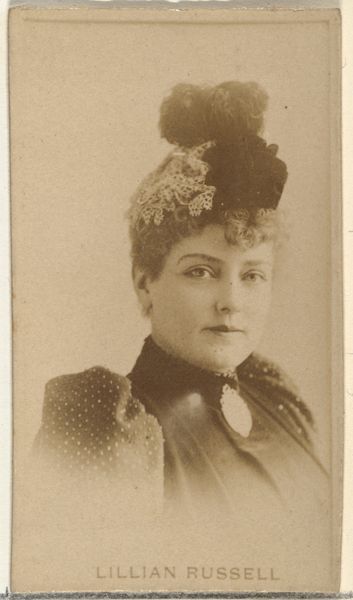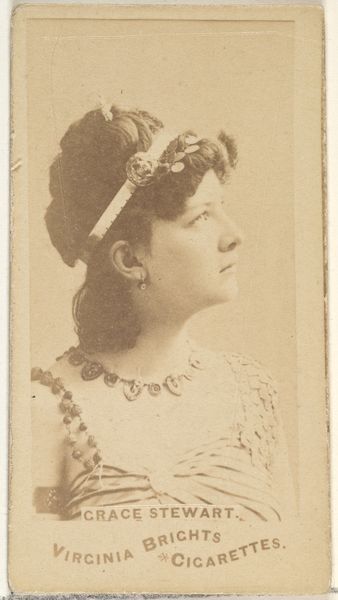
photography, albumen-print
#
portrait
#
photography
#
academic-art
#
portrait art
#
albumen-print
Dimensions: 3 3/4 x 2 1/4 in. (9.53 x 5.72 cm) (image)4 3/16 x 2 7/16 in. (10.64 x 6.19 cm) (mount)
Copyright: Public Domain
Curator: What strikes me immediately is the overall feeling of subdued elegance. It’s quiet, almost contemplative. Editor: Well, it is a photograph entitled "Minnie Conway (1854-1896)," crafted sometime between 1869 and 1874 by Jeremiah Gurney. It’s an albumen print, a very popular medium in that era for portraiture. Curator: The feathered hat and lace collar certainly evoke a certain societal expectation, almost a codified language of attire for women during this time. Those visual symbols speak volumes. Editor: Absolutely. The late 19th century was a period of intense social and economic change. Portrait studios like Gurney’s democratized portraiture for the middle classes. Think about it—before, only the wealthy could afford painted portraits. Curator: And how potent those earlier, painted portraits must have been as markers of power and lineage. With this photograph, though, there's an intimacy, wouldn't you agree? Her gaze is steady but soft. Editor: Indeed. This portrait offers a glimpse into the changing socio-cultural landscape, where representation began to shift towards a broader spectrum of society. Gurney operated on Fifth Avenue, catering to the upper-middle class. It begs the question—who was Minnie Conway? What did having her photograph taken signify for her within her social milieu? Curator: The image has layers. Consider her gaze—what feelings or narratives is she trying to portray? I wonder if the lack of strong expression points to cultural ideals for women. The control, maybe, which women tried to keep over their own projected images, and in that control the subtle indications of rebellion against those demands? Editor: A portrait wasn't just about likeness, but about crafting a public identity. That’s an intriguing proposition about controlling public image. Gurney and other photographers offered a service and fulfilled social expectations in this emerging visual economy. Curator: I can't help but look past those expectations and imagine this photograph in her family's collection, what emotions it stirs, how a single image can compress so many feelings. Editor: Looking closely allows us to look through a portal. Art can create access to lived historical experiences that allow visitors a glimpse into a distant age.
Comments
No comments
Be the first to comment and join the conversation on the ultimate creative platform.
